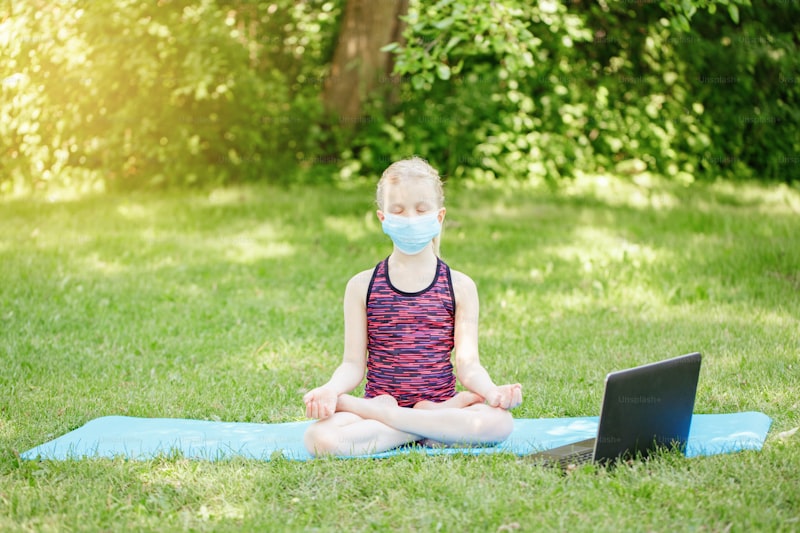In October of last year the British Wheel of Yoga caused controversy in the UK yoga world with the announcement that they are developing National Occupational Standards to ensure that yoga teachers in the UK are adequately and safely trained. Here Poppy Pickles delves into the stories behind the move and explores what the future of yoga regulation could look like.
While this sounds like a sensible move, it has angered smaller yoga schools, such as the Traditional Yoga Association, who felt that the British Wheel of Yoga are trying to bureaucratise and potentially gain financial benefit from something that was not theirs in the first place, but an ancient Indian spiritual discipline.
Swami Ambikananda Saraswati, the founder of the Traditional Yoga Association, argued that imposing a new set of National Occupational Standards would essentially be a way of putting a ‘two-tier system’ of yoga teachers in place, as some teachers will pay to get the stamp, and others won’t, effectively working as a tax on largely self-employed yoga teachers.
Yoga – a Dangerous Pastime?
It is in fact very difficult to gather hard scientific evidence for whether yoga is beneficial or injurious to those that practice it. Like any strenuous form of physical activity, there is the potential for injury to occur during yoga practice. In his book, ‘Science and Yoga: The Risks and the Rewards’, the science journalist for The New York Times, William J Broad, argued that without careful precautions yoga can cause knee, back and shoulder injuries, and even strokes.
Paul Fox, Chair of the British Wheel of Yoga believes that poorly-trained yoga teachers lead to higher rates of injury and that more regulation of the efficacy of training courses would improve the safety standard in the yoga industry: “Because it’s unregulated, a lot of people run [sub-standard] teacher training courses.”
However, as most of us who practice yoga have experienced, yoga also has the potential to do the very opposite. In his book, Yoga; The Path to Holistic Health, the father of Iyengar yoga, B. K. S. Iyengar, states that ‘Yoga can heal parts of our bodies that have been injured, traumatized, or simply ignored and neglected.’ In order to utilise this healing potential however, the practitioner, and ultimately the teacher, must ‘begin with understanding the entire human body and the way it functions.’
How to Promote Safety in Yoga
Sarah Shone, a yoga teacher and chartered physiotherapist, who has won an award for her work in integrating yoga into NHS physiotherapy, argues that yoga is one of the very safest forms of physical activity for the vast majority of people, with the proviso that they are sensible and take responsibility for their own practice. She points out that the most common injuries in yoga are often to do with overstretching, being in poor alignment, and aggravating problems that are pre-existing in the student.
There are certain basic, practical precautions that all yoga teachers should bear in mind when taking on new students, which would help to eliminate these types of injuries. Firstly, they should fill out a form giving an indication of any health issues, and should also be asked regularly if they have any new injuries. If as a teacher you are unsure about how to deal with the injury, it is better to be cautious. Inversions especially should be treated with the respect they deserve, due to the potential for injury caused by loading too much pressure on the cervical spine. By communicating with their students, the teacher will have a clearer idea of whether certain poses would be suitable or not – it is then ultimately up to the student whether or not they want to give it a go.
There is clue in the word ‘sensible’, used by Sarah. It doesn’t mean being boring and playing it safe necessarily, but having both good sense and sensitivity, in our own yoga practice and in our role as a yoga teacher.
Let Yoga Provide the Answer
As Swami Saraswati points out in her argument against the British Wheel of Yoga’s move to regulate, ‘yoga continues to be the ancient path of Hindu mysticism’ and a ‘National Occupational Standard dismisses this spiritual connection’.
In fact, yoga already comes complete with an ancient and handy guide on how to live and practice; the yamas and niyamas. They are a list of moral codes, aptly beginning with Ahimsa, or non-violence.If you are true to the principle of non-violence in your yoga class or practice, you will be aware of when pain crosses over to actual harm, or if you’re not initially aware, you will hopefully learn the hard way after doing it once. This also applies to yoga teachers, who should make sure that their classes are not crossing the line from pushing the students to being actually unsafe.
Another example of these principles aiding safe yoga practice is svadhyaya, or the study of the self. Through studying ourselves and our bodies, we then become aware of what is safe and conversely, what is not.
Paying Attention to Sequencing
A lot of mistakes and injuries happen when the careful sequencing of a yoga class is not given enough thought, or disregarded altogether.
An experienced yoga teacher puts the class together in a way that first of all warms up the body, then leads the class to the peak pose, then cools the class down again, culminating in the final savasana, which rests the body before charging out the door again. If the more advanced poses are tackled out of sequence, or with cold muscles, the risk of injury is increased.
When teaching beginners it is safer to start with the standing poses, as they include all the movements of the spine. They are also a way of getting the students to connect with the bodies, while increasing their physical strength.
Yoga Should be Safe for all
With the right teacher, yoga should be safe and beneficial for all. Take Iyengar yoga student, Jean Dawson, who turned 100 years old this year. She practices yoga every day and says, “I have met so many kind and lovely people through yoga and made some good friends. I don’t know how I’d be today if I hadn’t taken up yoga. I heartily recommend yoga to all.”












